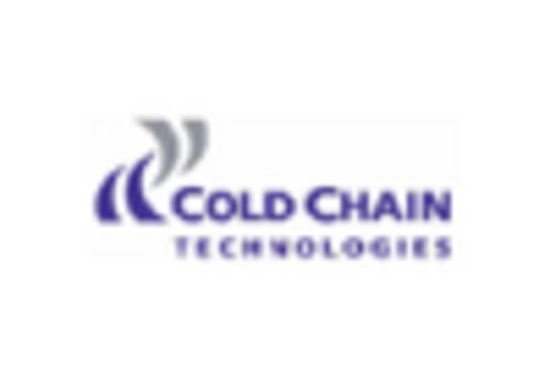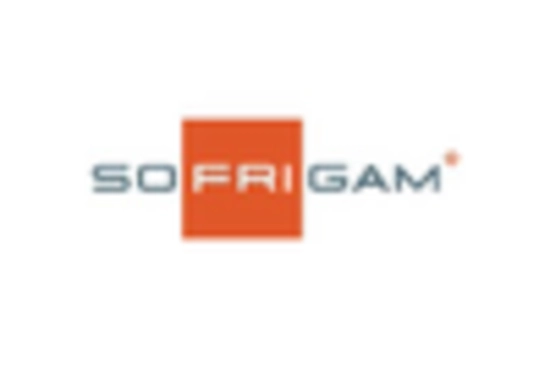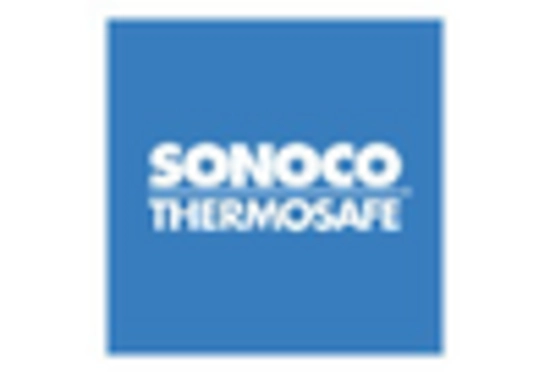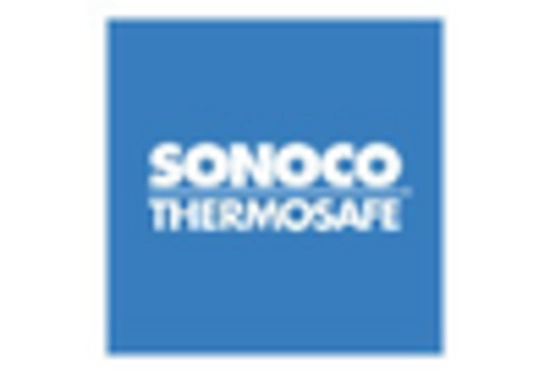Rising Demand for Temperature-Sensitive Products
The increasing demand for temperature-sensitive products, particularly in the pharmaceutical and food sectors, drives the Reusable Cold Chain Packaging Market. As consumers become more health-conscious, the need for safe and effective transportation of perishable goods intensifies. In 2025, the pharmaceutical sector is projected to account for a substantial share of the cold chain market, with an estimated value exceeding 200 billion USD. This trend indicates a growing reliance on efficient cold chain solutions, which enhances the need for reusable packaging options that ensure product integrity during transit. The Reusable Cold Chain Packaging Market is thus positioned to benefit from this rising demand, as companies seek sustainable and cost-effective solutions to meet consumer expectations.
Technological Innovations in Packaging Solutions
Technological advancements play a pivotal role in shaping the Reusable Cold Chain Packaging Market. Innovations such as smart packaging, temperature monitoring systems, and advanced insulation materials enhance the efficiency and reliability of cold chain logistics. These technologies not only improve the tracking and management of temperature-sensitive products but also reduce spoilage and waste. In 2025, the integration of IoT and AI in cold chain management is expected to grow, potentially increasing operational efficiency by up to 30%. This trend suggests that companies investing in advanced packaging solutions will likely gain a competitive edge, further propelling the growth of the Reusable Cold Chain Packaging Market.
Growth of E-commerce and Online Food Delivery Services
The rapid expansion of e-commerce and online food delivery services significantly impacts the Reusable Cold Chain Packaging Market. As consumers increasingly turn to online platforms for grocery and meal deliveries, the demand for reliable cold chain solutions rises. In 2025, the online food delivery market is projected to surpass 150 billion USD, necessitating efficient packaging that maintains product quality during transit. This shift towards e-commerce creates opportunities for reusable packaging solutions that can withstand the rigors of transportation while minimizing environmental impact. Consequently, the Reusable Cold Chain Packaging Market is poised for growth as businesses adapt to changing consumer preferences and invest in sustainable packaging alternatives.
Environmental Regulations and Sustainability Initiatives
The increasing emphasis on environmental regulations and sustainability initiatives significantly influences the Reusable Cold Chain Packaging Market. Governments and organizations worldwide are implementing stringent regulations aimed at reducing plastic waste and promoting eco-friendly practices. This regulatory landscape encourages companies to adopt reusable packaging solutions, which not only comply with environmental standards but also reduce overall packaging costs. In 2025, it is anticipated that the market for sustainable packaging will reach approximately 400 billion USD, highlighting the potential for growth in the reusable segment. Consequently, the Reusable Cold Chain Packaging Market is likely to experience heightened interest as businesses strive to align with sustainability goals while maintaining operational efficiency.
Cost Efficiency and Economic Benefits of Reusable Solutions
The economic advantages associated with reusable packaging solutions are a driving force in the Reusable Cold Chain Packaging Market. Companies are increasingly recognizing that investing in reusable packaging can lead to significant cost savings over time. By reducing the need for single-use packaging, businesses can lower their overall packaging expenses and minimize waste disposal costs. In 2025, it is estimated that companies utilizing reusable packaging could save up to 20% on their logistics costs. This financial incentive encourages more organizations to transition to reusable options, thereby fostering growth in the Reusable Cold Chain Packaging Market. As businesses seek to optimize their supply chains, the adoption of reusable solutions is likely to become a standard practice.


















Leave a Comment